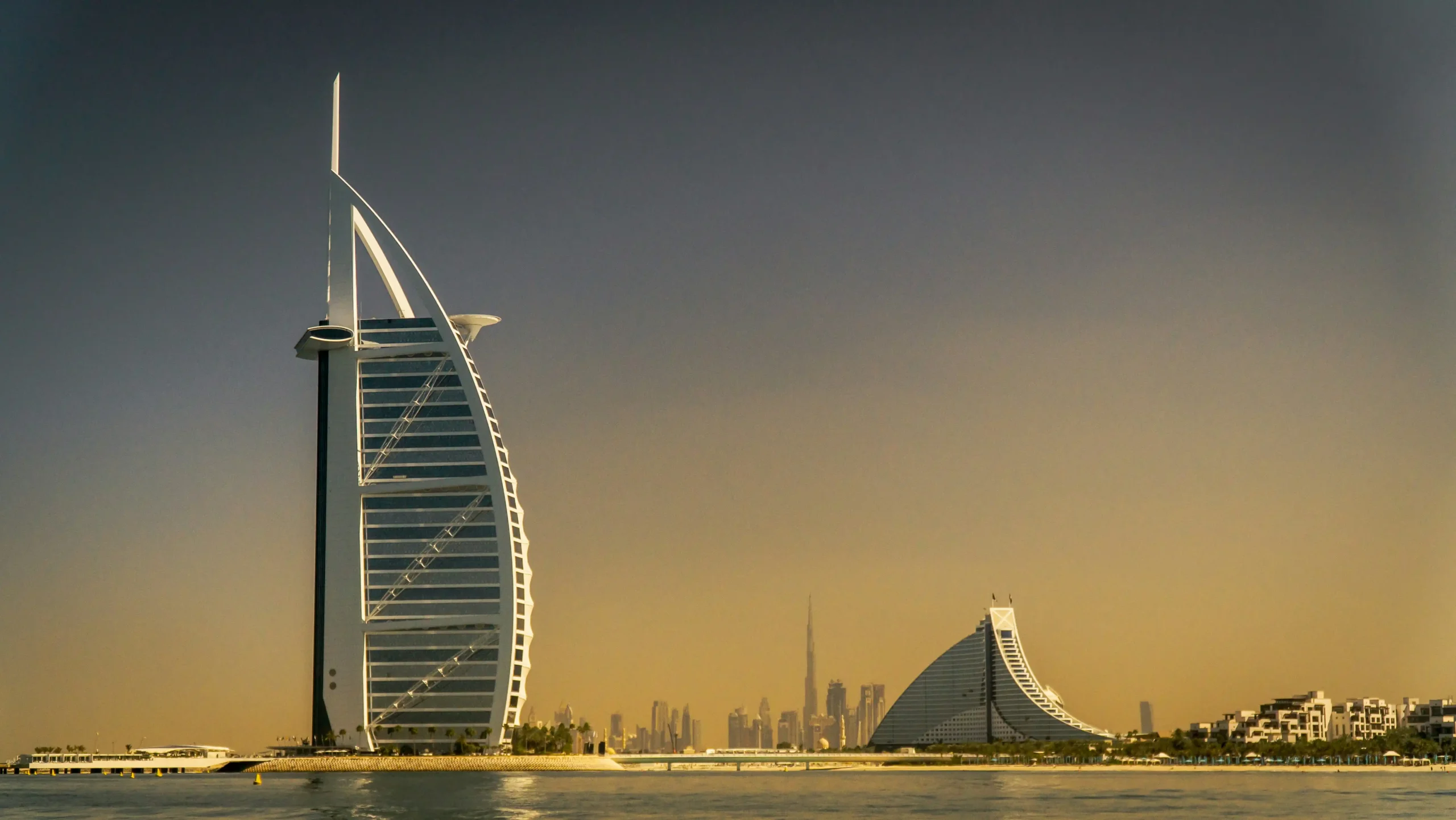The Burj Al Arab Jumeirah, often dubbed Dubai’s “seven-star hotel,” has towered over the Arabian Gulf since its grand opening in December 1999. Rising from its man-made island 280 m / 920 ft off Jumeirah Beach, this sail-shaped hotel has become synonymous with ultra-luxury and architectural bravado. When people think of Dubai, the soaring Burj Khalifa often comes to mind as the city’s defining landmark. However, the Burj Al Arab holds its own unique place of importance—as an architectural and cultural icon symbolizing Dubai’s luxury and innovation, standing proudly alongside its taller neighbour in shaping the city’s world-renowned skyline.
Politically and culturally, the Burj Al Arab transcends its status as a high-end lodging. With its dazzling structural form, lavish interiors, and over-the-top hospitality, it has shaped perceptions of hospitality globally—elevating hotel design to an art of spectacle and service.
Tower Stats
- Height to architectural tip: 321 m / 1,053 ft
- Highest occupied floor: 197.5 m / 648 ft
- Helipad height: 210 m / 689 ft
- Floors above ground: 56
- Number of suites: 202 rooms
- Number of elevators: 18
- Construction period: 1994–1999
- Construction cost: Estimated at US $1 billion
Architecture and Design
Conceived by Tom Wright of Atkins, the hotel is intentionally shaped like a dhow sail, anchoring Dubai’s maritime legacy to its futuristic aspirations. Two outward-leaning “wings” enclose a cavernous 180 m / 590 ft tall atrium—once the world’s tallest
The hotel is situated on a reclaimed island, secured by 230 concrete piles that reach 40 m in depth, and protected by a honeycomb concrete breakwater designed to resist wave erosion. The engineering delicacy harmonizes maritime resilience with architectural elegance.
Inside, cascading Statuario marble, aquamarine fountains, gilded accents, and plush fabrics create a vividly theatrical space.
Hospitality & Amenities
Managed by the Jumeirah Group, the Burj Al Arab is a beacon of hyper-luxury. Every suite contains 24/7 butler service, pillow menus (with 17 options), and lavish gold finishes.
Dining is nothing short of cinematic:
- Al Muntaha, cantilevered over the Gulf at ~200 m, offers panoramic views.
- Al Mahara, reached through a simulated submarine ride, features a massive aquarium winding through the restaurant.
Other luxuries include indoor/outdoor pools, the 24-karat gold-tinged drinks, spa, Rolls-Royce transfers, the helipad, and luxury food tours.
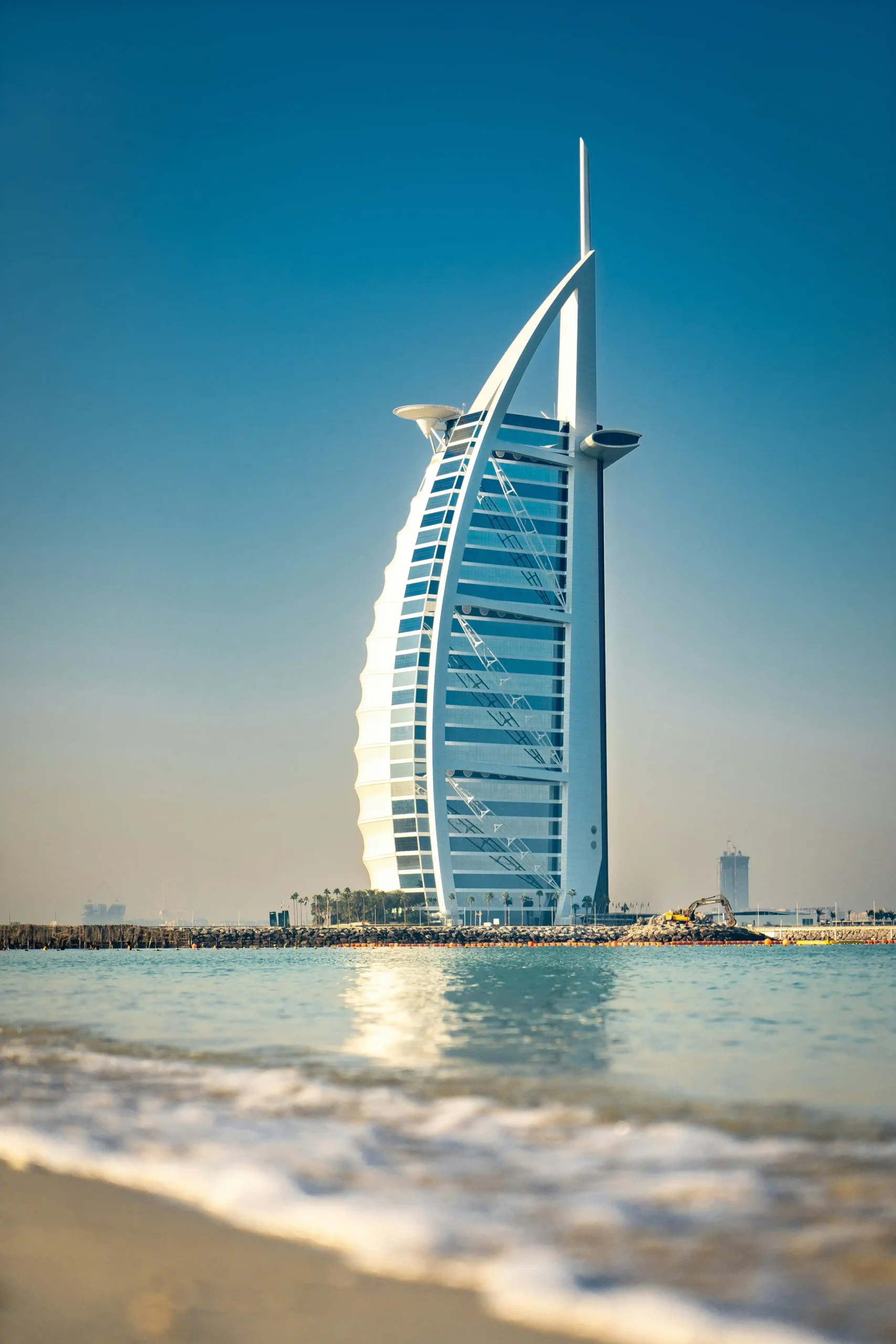
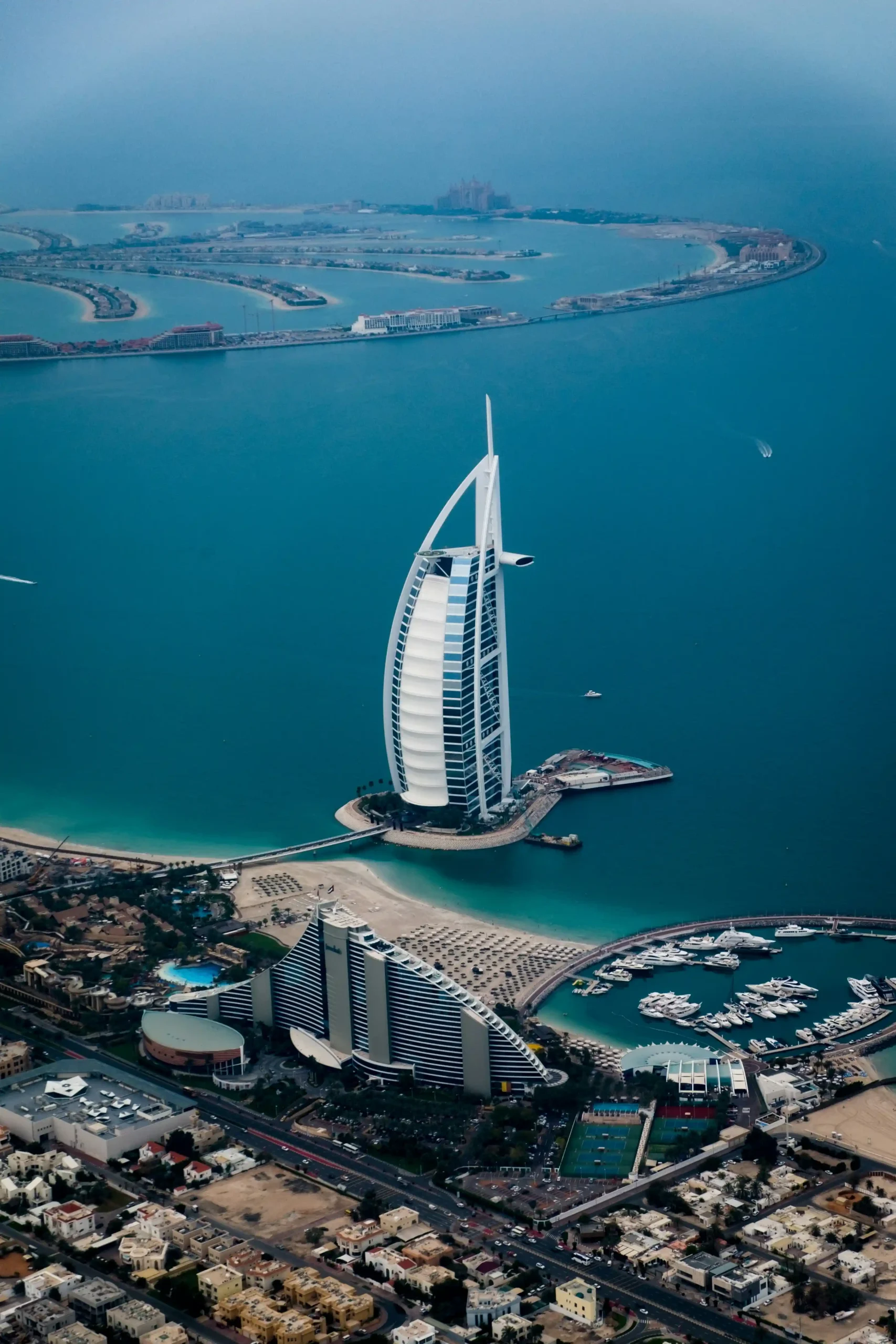
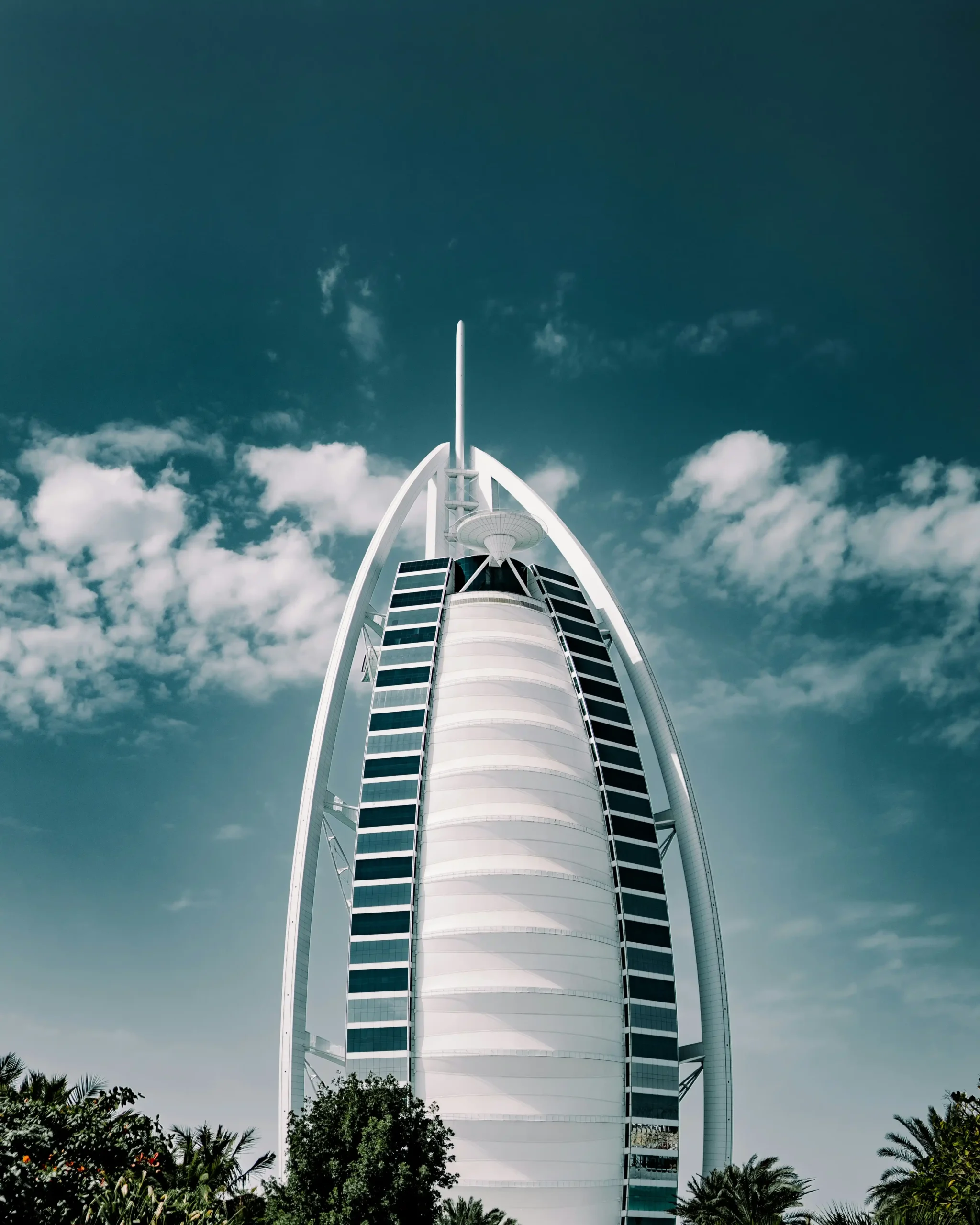
Thank you, Photographers! Darcey Beau, Christoph Schulz, untldshots, and Nathan John on Unsplash
Tourism Magnet
Since its debut in 1999, the Burj Al Arab has stood at the heart of Dubai’s tourism appeal. While only the wealthiest guests can experience staying within its luxurious suites, countless others admire its iconic sail-shaped silhouette from afar—whether from the beach, a passing boat, or the public vantage points—since direct access, including the private bridge, is heavily restricted.
Luxury Branding
The Burj Al Arab has become synonymous with ultra-luxury, positioning Dubai as a top destination for discerning, high-net-worth travellers. Although officially rated as a five-star hotel by the UAE’s tourism authorities, the Burj Al Arab is famously referred to as a “seven-star” hotel—a term coined by the international press shortly after its opening. This unofficial label doesn’t reflect an actual industry rating but rather expresses the hotel’s extraordinary level of opulence and service that goes far beyond typical five-star standards.
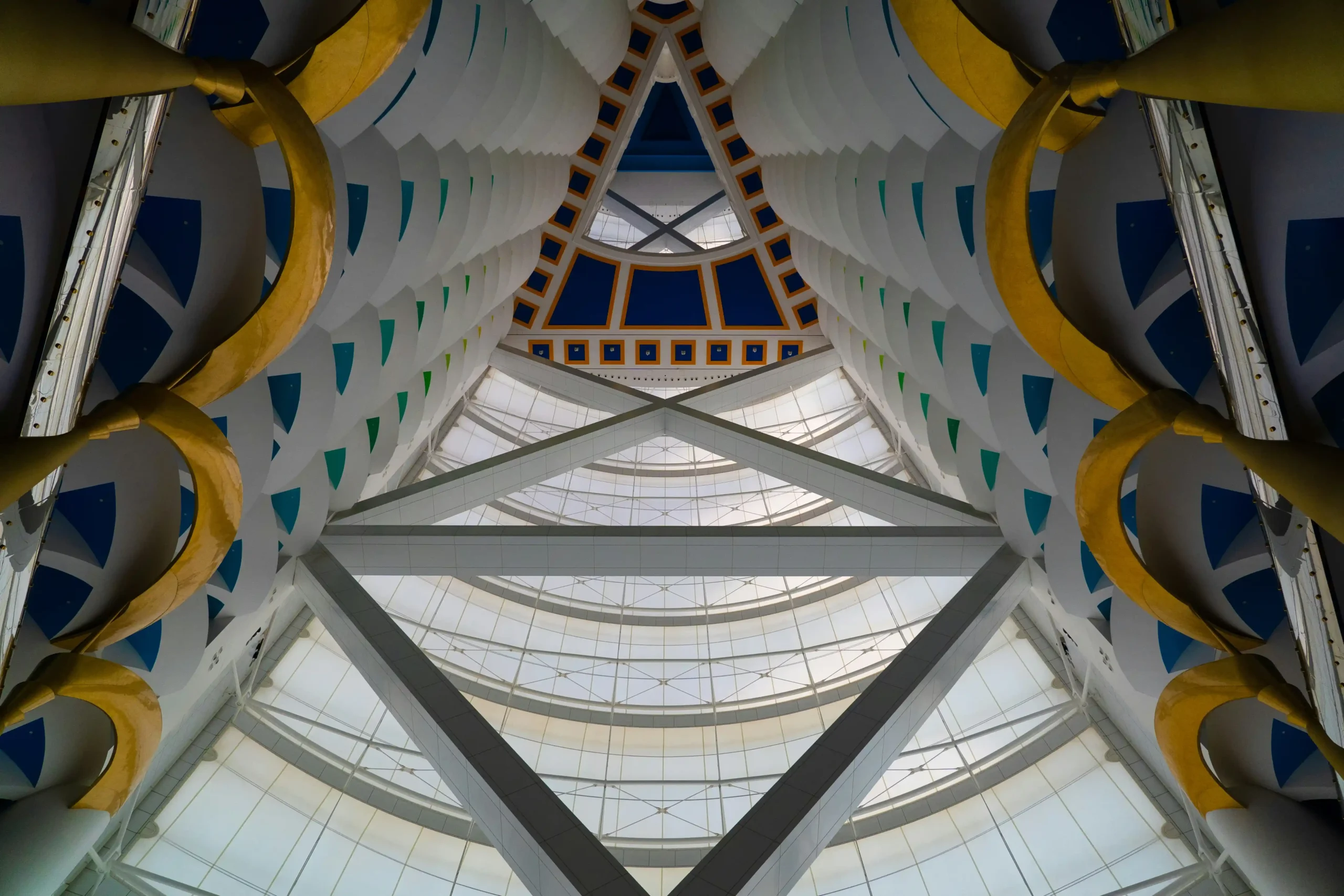
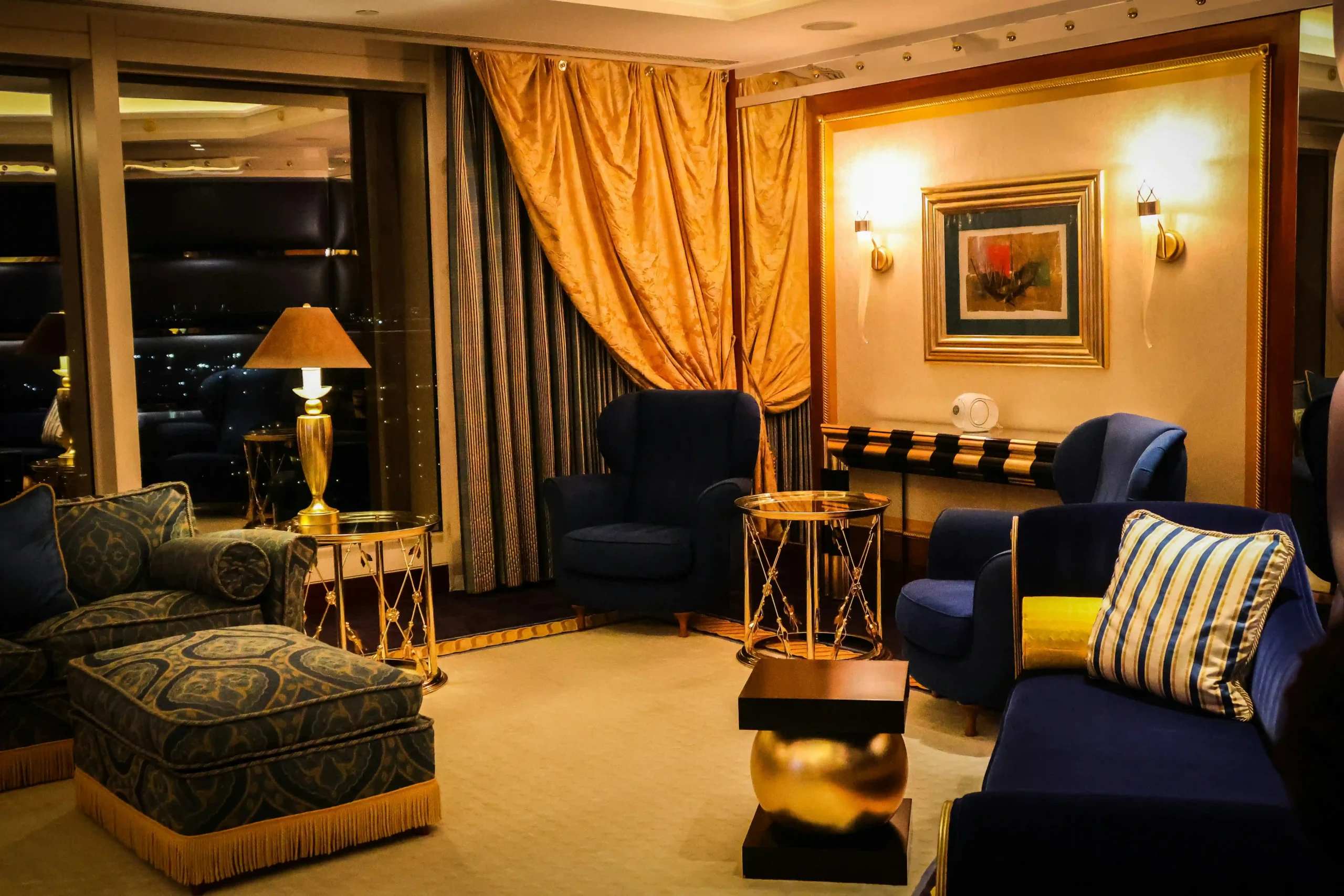
Thank you, Photographers! Nick Fewings and Meg von Haartman on Unsplash
Economic Ripple Effect
The Burj Al Arab has boosted surrounding businesses, from luxury retailers and fine-dining restaurants to yacht tours and helicopter operators. As an icon frequently used in marketing campaigns, it has indirectly generated billions of dollars in tourism revenue for Dubai over the past two decades.
Engineering and Construction Challenges
Man-Made Island Foundation
The hotel was built on an artificial island 280 m / 920 ft offshore, requiring advanced marine engineering. Construction crews created a honeycomb-pattern concrete base on the seabed to prevent erosion, a process that took two years before vertical construction could begin.
Structural Resilience
To withstand the harsh conditions of the Arabian Gulf, the Burj Al Arab’s structure is built around a robust reinforced concrete and steel exoskeleton engineered for exceptional durability. The design accounts for frequent high winds, intense heat, and the corrosive effects of salty sea air. Special corrosion-resistant materials and protective coatings are used throughout the steel framework to prevent rust and degradation, while the concrete mix includes additives that enhance its resistance to saltwater penetration. This careful engineering ensures the building maintains structural integrity despite constant exposure to the marine environment and extreme weather, allowing it to stand strong.
Atrium Engineering Feat
The 180 m / 590 ft open atrium—one of the tallest in the world—required innovative load distribution to remain column-free, preserving the uninterrupted open space that defines the interior’s dramatic visual impact.
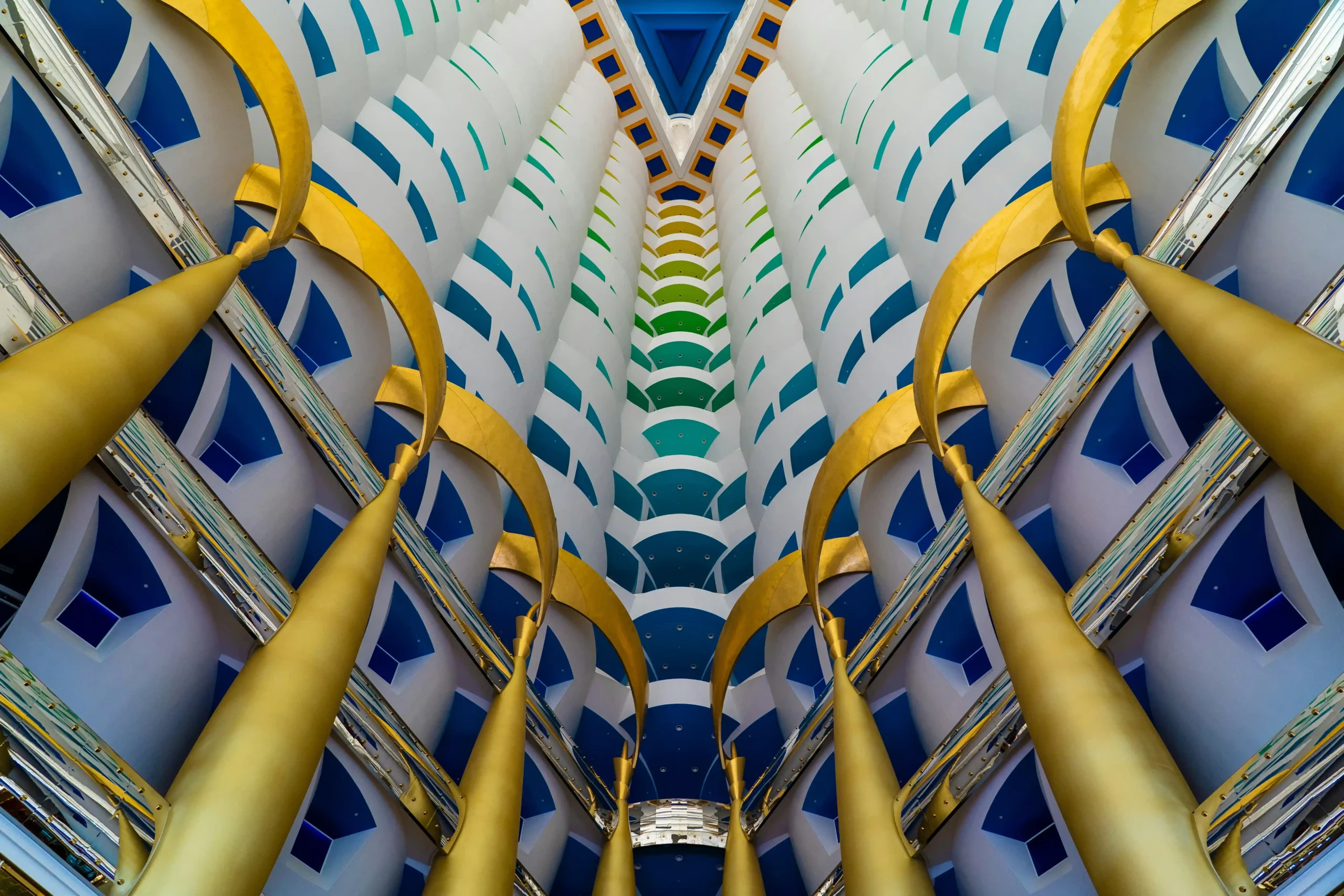
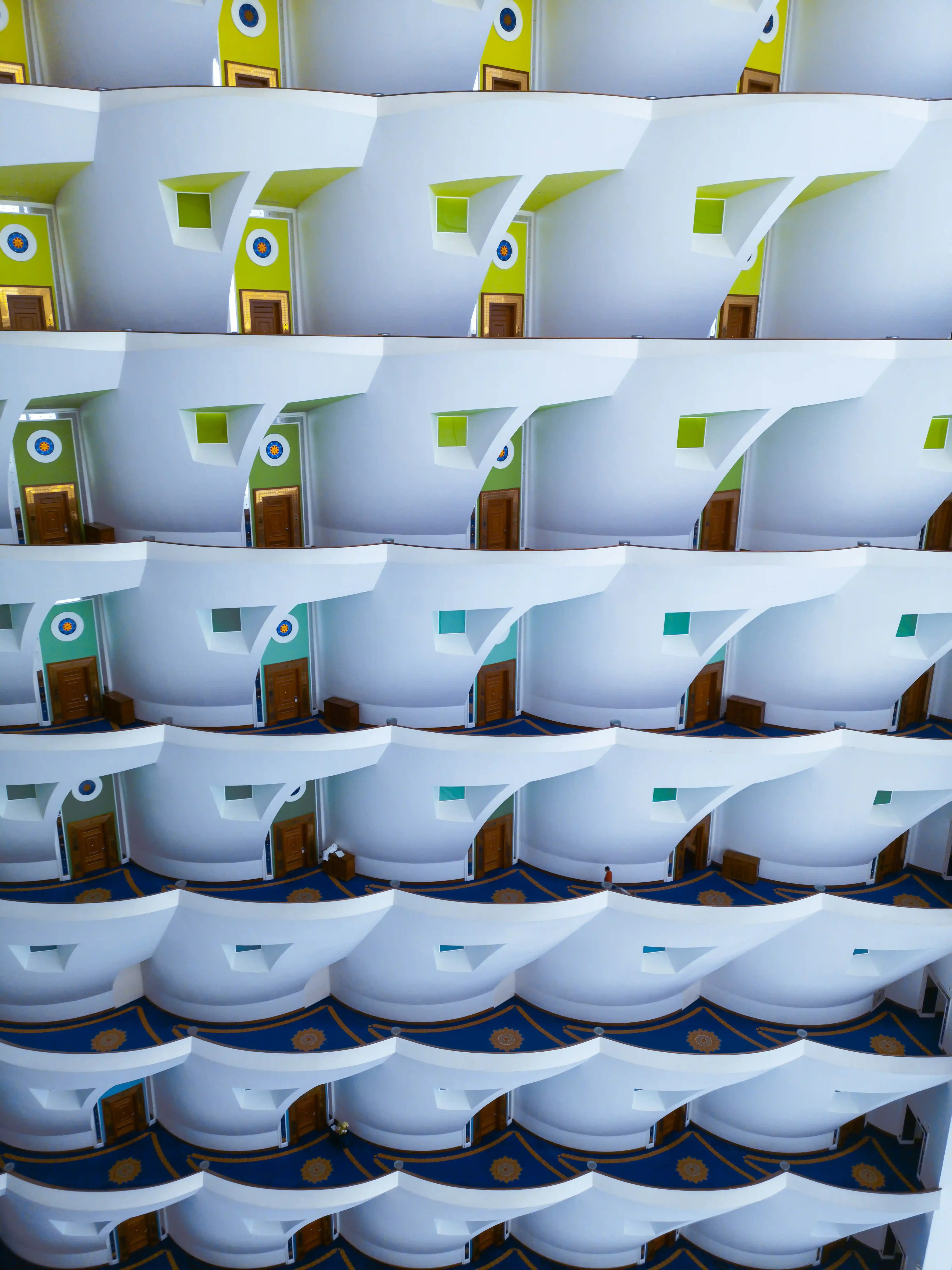
Thank you, Photographers! Nick Fewings and Neil Robespierre on Unsplash
Fun Facts
- Though it calls itself a five-star establishment officially, it’s widely dubbed the “seven-star hotel”—a name born from sheer extravagance.
- Its helipad has featured tennis matches, boxing rings, F1 car stunts, and even kite-surfing jump-offs.
- The atrium’s height, once the tallest atrium globally, now trails only Beijing’s Leeza SOHO (194 m / 636 ft).
- The building incorporates lavish finishes: 2.5 million cubic feet of concrete, 9,000 tonnes of steel, 250,000 square feet of Statuario marble, and thousands of gold fixtures.
- Records and luxury galore: the hotel’s royal suite costs up to US $25,000 per night.
Cultural Legacy
More than a hotel, Burj Al Arab Jumeirah is a symbol of Dubai’s desire to transcend conventional boundaries. It has set a benchmark in both design and hospitality—iconic in the same way the Eiffel Tower defines Paris or the Opera House defines Sydney. Even as newer and taller towers rise, its distinctive silhouette remains instantly recognizable worldwide and firmly entrenched in the cultural psyche of ultra-luxury.

